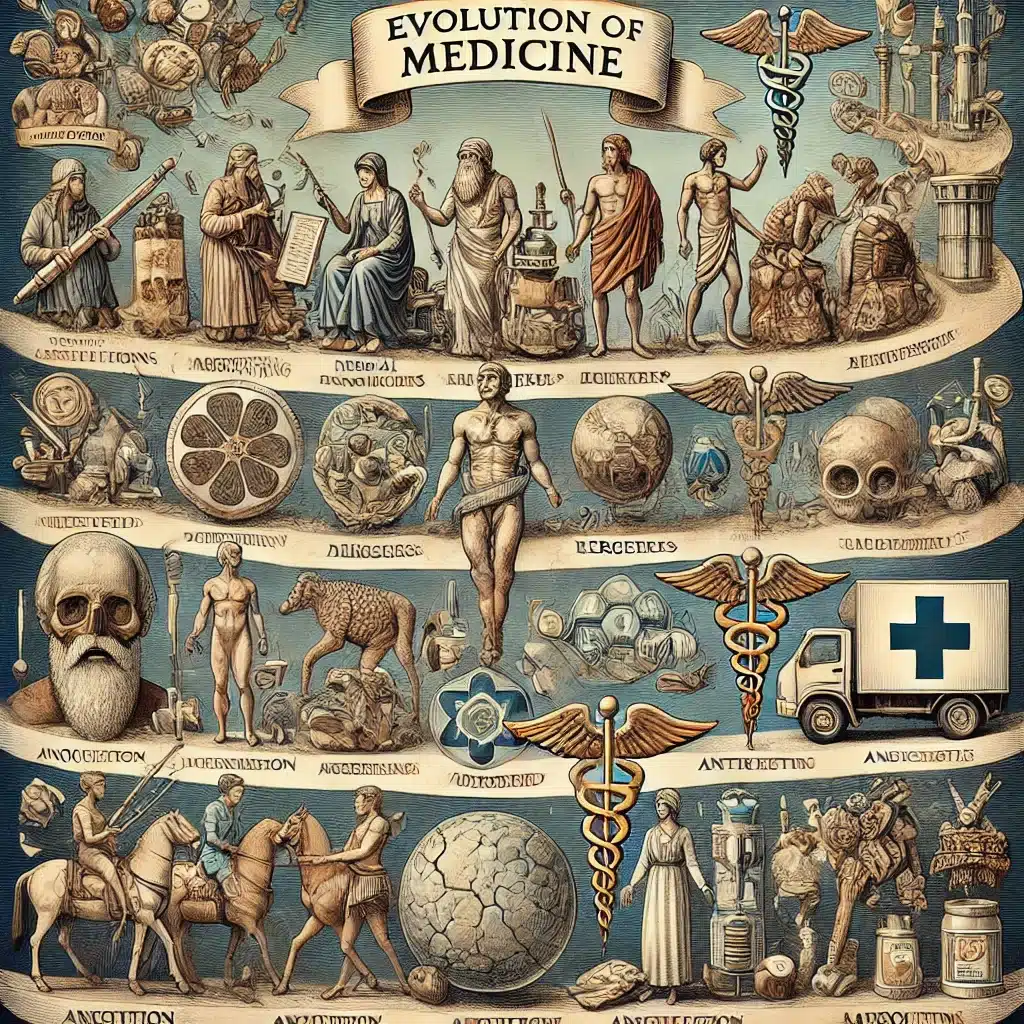This article explores the advancements in oncology, focusing on three major aspects: cancer cell therapy treatment, tumour biology, and palliative care. It explores the mechanisms and innovations in chemotherapy, radiation, and immunotherapy, followed by a discussion on the biology of tumours, including their development and the challenges they present in treatment. The final section examines the significance of palliative care in providing relief to patients with advanced cancer. Each area is critical in the ongoing battle against cancer, offering insights into both current practices and future directions in the field.
Introduction to Oncology
Oncology is the branch of medicine that deals with the prevention, diagnosis, and treatment of cancer. Over the years, significant advancements have been made in cancer research and therapy, leading to better survival rates and improved quality of life for many patients. This article examines the primary pillars of oncology: cancer treatment, tumour biology, and palliative care. Each section highlights the latest research and strategies used in managing cancer, from traditional approaches to more innovative techniques.
Cancer Treatment
Cancer treatment has evolved considerably over the past decades. Today, oncologists use a range of therapies, either individually or in combination, to combat different types of cancers. These include chemotherapy, radiation, and immunotherapy, each playing a distinct role in attacking malignant cells.
Chemotherapy
Chemotherapy remains one of the most common treatments for cancer. It involves the use of cytotoxic drugs to kill rapidly dividing cancer cells. Since these drugs circulate through the bloodstream, they can target cancer cells throughout the body, making chemotherapy especially useful for cancers that have spread (metastasised). However, its non-specific nature means that healthy cells, particularly those that divide quickly, like those in the bone marrow, digestive tract, and hair follicles, are also affected. This leads to the well-known side effects of chemotherapy, such as hair loss, nausea, fatigue, and increased susceptibility to infections.
Recent advances in chemotherapy have focused on improving the precision and efficacy of drugs. Targeted therapies, for example, aim at specific molecules involved in cancer cell growth and survival, reducing damage to healthy tissues. Additionally, drug delivery systems like liposomes and nanoparticles are being explored to enhance drug accumulation in tumour tissues while minimising systemic exposure.
Radiation Therapy
Radiation therapy is another cornerstone of cancer treatment, involving the use of high-energy particles or waves, such as X-rays or gamma rays, to destroy or damage cancer cells. Unlike chemotherapy, radiation therapy is typically localised, targeting specific areas of the body. It is often used in conjunction with surgery to shrink tumours before removal or to kill any remaining cancer cells post-surgery.
Advances in radiation therapy include techniques like intensity-modulated radiation therapy (IMRT) and stereotactic body radiation therapy (SBRT), which allow for more precise targeting of tumours, sparing surrounding healthy tissue. Proton therapy is another cutting-edge approach that uses protons instead of photons to deliver radiation, reducing damage to adjacent normal tissues.
However, radiation therapy is not without its limitations. Tumours located near vital organs or those that are resistant to radiation may not respond well. Additionally, the long-term effects of radiation, including the risk of secondary cancers, remain a concern.
Immunotherapy
Immunotherapy represents one of the most promising areas of cancer treatment. Unlike chemotherapy and radiation, which directly target cancer cells, immunotherapy harnesses the body’s immune system to recognise and destroy cancer cells. The immune system can be modulated through several approaches, including immune checkpoint inhibitors, cancer vaccines, and adoptive cell therapy.
Checkpoint inhibitors, such as pembrolizumab and nivolumab, block proteins that prevent immune cells from attacking cancer cells. This allows the immune system to recognise and destroy tumours more effectively. Another form of immunotherapy, CAR-T cell therapy, involves genetically engineering a patient’s T cells to better target and kill cancer cells.
Immunotherapy has shown remarkable success in treating certain types of cancers, such as melanoma, lung cancer, and lymphoma. However, it is not effective for all cancer types, and some patients experience severe immune-related side effects. Research is ongoing to identify biomarkers that predict who will benefit from immunotherapy and to develop combination therapies that enhance its effectiveness.
Tumour Biology
Understanding the biology of tumours is crucial in developing effective treatments. Tumours are highly complex, consisting not only of cancer cells but also of a surrounding environment that influences their growth and behaviour. This tumour microenvironment includes blood vessels, immune cells, fibroblasts, and extracellular matrix components, all of which can either support or hinder cancer progression.
Tumour Development and Growth
Cancer begins when normal cells undergo genetic mutations that cause them to grow uncontrollably. These mutations often affect genes involved in regulating cell division, DNA repair, and apoptosis (programmed cell death). As cancer cells accumulate more mutations, they become increasingly aggressive, acquiring the ability to invade surrounding tissues and metastasise to distant organs.
One of the hallmarks of cancer is its ability to sustain chronic inflammation, which promotes tumour growth. Inflammatory cells within the tumour microenvironment release cytokines and growth factors that stimulate cancer cell proliferation and survival. Angiogenesis, the formation of new blood vessels, is another key feature of tumours, providing them with the oxygen and nutrients they need to grow.
Tumour Heterogeneity
One of the greatest challenges in treating cancer is tumour heterogeneity. No two tumours are exactly alike, even within the same type of cancer. This heterogeneity can exist between patients (inter-tumour heterogeneity) or within a single tumour (intra-tumour heterogeneity). Different regions of a tumour may contain cancer cells with distinct genetic mutations, making it difficult to develop therapies that effectively target all cancer cells within the tumour.
Researchers are developing ways to address tumour heterogeneity, including personalised medicine approaches. By sequencing the genomes of individual tumours, oncologists can identify mutations that drive cancer growth and select targeted therapies that are more likely to be effective. Liquid biopsies, which detect cancer DNA in the bloodstream, are also being explored as a way to monitor tumour evolution and guide treatment decisions in real-time.
Drug Resistance in Tumours
Drug resistance is a major obstacle in cancer treatment. Even when a tumour initially responds to chemotherapy or targeted therapy, cancer cells can eventually develop resistance, leading to treatment failure. Resistance can occur through several mechanisms, including mutations in the drug’s target, activation of alternative signalling pathways, or enhanced drug efflux from cancer cells.
Overcoming drug resistance is a key focus of cancer research. One approach is the use of combination therapies that target multiple pathways simultaneously, reducing the likelihood of resistance. Another strategy is the development of drugs that target cancer stem cells, a subpopulation of tumour cells thought to be responsible for treatment resistance and cancer relapse.
Palliative Care
Palliative care is an essential component of cancer treatment, especially for patients with advanced or terminal cancer. Its primary goal is to improve the quality of life by managing symptoms, relieving pain, and addressing the emotional, psychological, and spiritual needs of patients and their families. Palliative care is not limited to end-of-life situations; it can be provided alongside curative treatments at any stage of cancer.
Pain Management
Pain is one of the most common and debilitating symptoms experienced by cancer patients. It can result from the tumour itself, cancer treatments, or other related complications. Effective pain management is critical for improving a patient’s quality of life. Opioids, such as morphine, are often used to treat moderate to severe cancer pain. Non-opioid analgesics, like NSAIDs (non-steroidal anti-inflammatory drugs), may also be employed for milder pain or in combination with opioids.
In addition to pharmacological treatments, non-drug approaches such as physical therapy, massage, and acupuncture may be used to manage pain. Psychological interventions, including cognitive-behavioural therapy (CBT), can also help patients cope with pain and reduce its emotional impact.
Symptom Control
Beyond pain, cancer patients often experience a wide range of other symptoms, including fatigue, nausea, breathlessness, and loss of appetite. Palliative care focuses on managing these symptoms through both medical and holistic approaches. Anti-emetics are commonly prescribed to alleviate nausea, while steroids or appetite stimulants may be used to improve appetite and weight.
Fatigue is another common issue, and its management involves addressing underlying causes, such as anaemia or depression, and encouraging patients to conserve energy by balancing activity with rest. Breathlessness, particularly in lung cancer patients, may be treated with bronchodilators, oxygen therapy, or non-invasive ventilation.
Psychosocial Support
Cancer diagnosis and treatment can take a significant toll on a patient’s mental health. Many experience anxiety, depression, or feelings of isolation. Palliative care teams provide psychosocial support to help patients and their families cope with the emotional burden of cancer. This support may involve counselling, support groups, or interventions designed to help patients maintain a sense of control and dignity.
Spiritual care is also a component of palliative care, addressing existential concerns and helping patients find meaning and peace during their illness. Palliative care teams often work closely with chaplains or spiritual advisers to provide this support.
End-of-Life Care
For patients with terminal cancer, palliative care shifts to focus on providing comfort and dignity during the final stages of life. This may involve advanced care planning, where patients express their wishes regarding treatments they do or do not want as their disease progresses. Hospice care is an option for those who wish to spend their final days in a more home-like environment rather than in a hospital setting.
End-of-life care also involves supporting the patient’s family and caregivers, helping them cope with grief and loss, and preparing them for the death of their loved one.
Conclusion
Oncology has made tremendous strides in recent years, with significant advancements in cancer treatment, a deeper understanding of tumour biology, and an increasing emphasis on palliative care. While chemotherapy, radiation, and immunotherapy offer powerful tools for treating cancer, challenges such as tumour heterogeneity and drug resistance remain. Understanding the complex biology of tumours is essential for developing more effective therapies, while palliative care plays a vital role in ensuring that patients with advanced cancer receive the best possible quality of life.
As research continues to evolve, there is hope that new treatments and strategies will lead to further improvements in cancer outcomes, offering both longer survival and a better quality of life for patients.
Disclaimer
The content provided in this article, Advances in Oncology: Cancer Treatment, Tumour Biology, and Palliative Care, is for informational and educational purposes only. It is intended to offer general insights into developments in oncology and should not be considered medical advice, diagnosis, or treatment guidance. Readers are advised to consult qualified healthcare professionals regarding any specific medical condition or treatment options. The views expressed in this article are those of the authors and do not necessarily reflect the position of Open Medscience. While efforts have been made to ensure accuracy, Open Medscience makes no guarantees regarding the completeness, timeliness, or reliability of the information provided. Use of this article is at the reader’s own risk.
You are here: home » diagnostic medical imaging blog »



